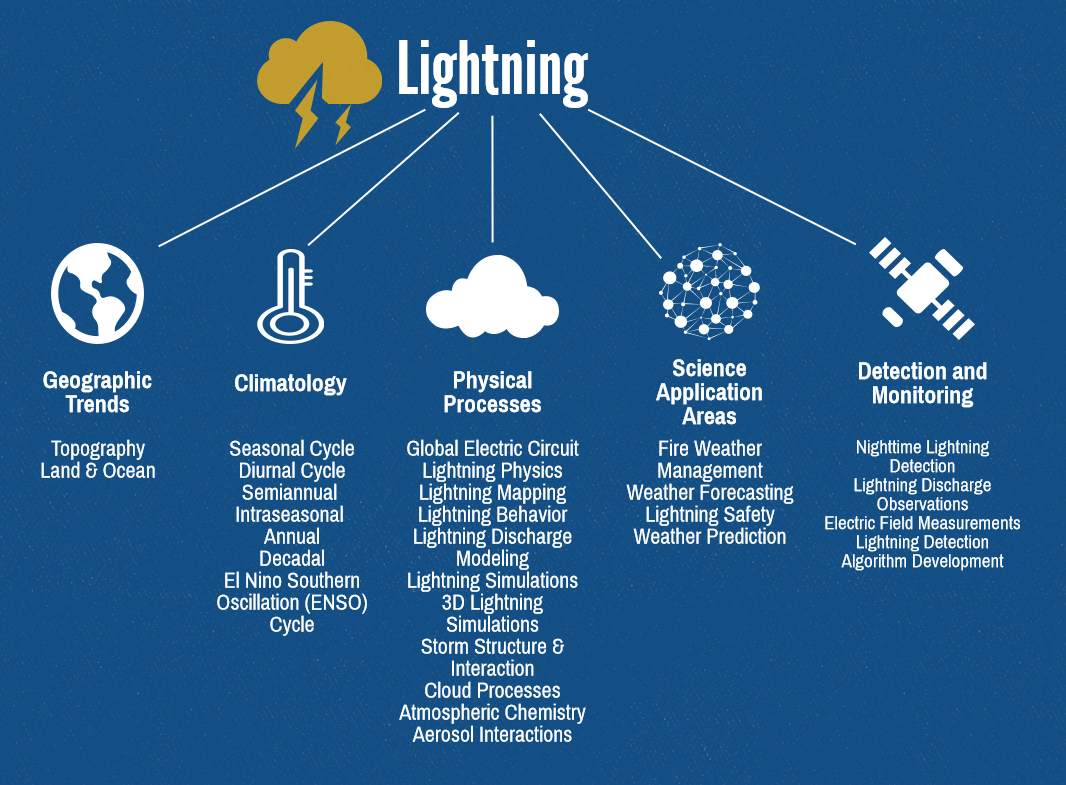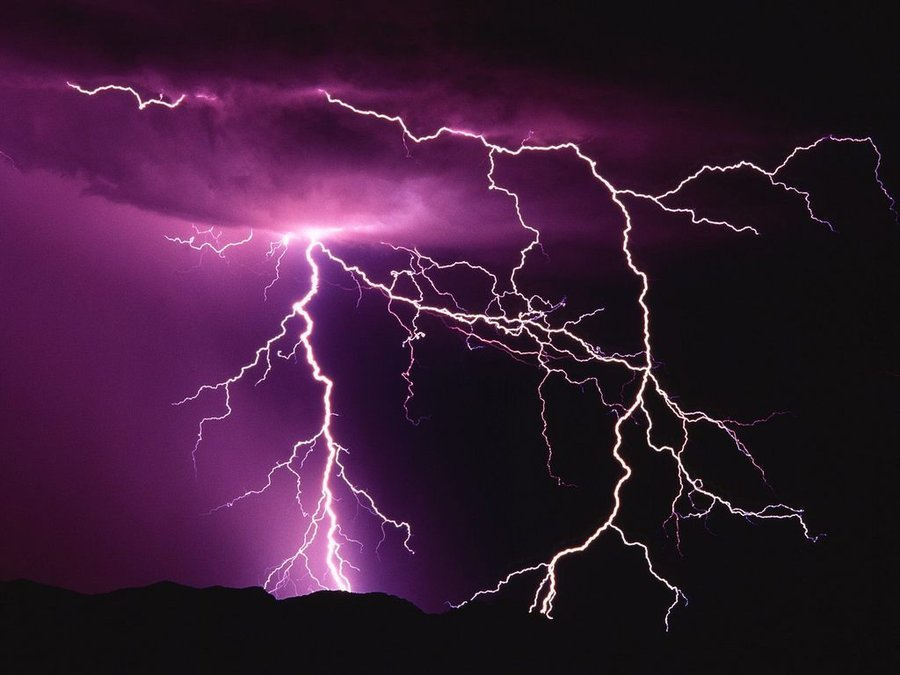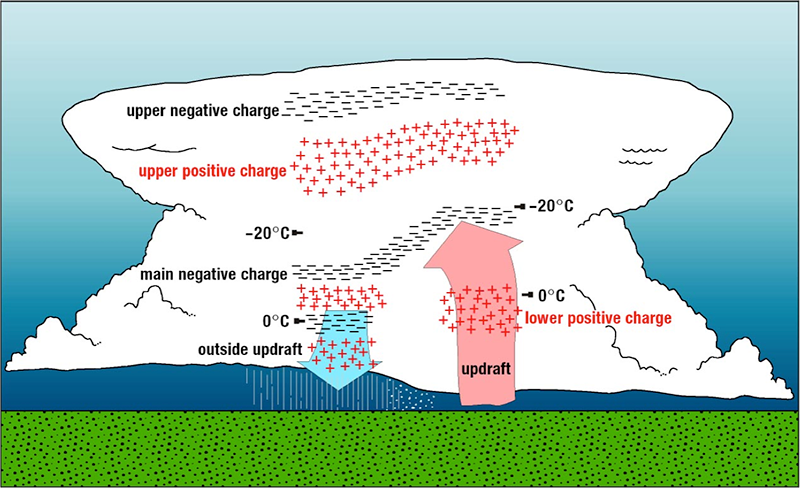Lightning
WHAT IS LIGHTNING?
Lightning is the electrical discharge between positively and negatively charged regions within clouds. The electrical discharge serves as an equalization process between the charged regions, and can travel from cloud-to-cloud, cloud-to-ground, or cloud-to-air. Visually, lightning is comprised of bright flashes of light called strokes. The loud sound of thunder that accompanies lightning is a sonic shock wave produced by the rapid expansion of the air surrounding the lightning channel during the stroke, similar to a sonic boom. Lightning and thunder occur at the same time, however, because light travels faster than the speed of sound, lightning may be observed sooner than thunder is heard.
Why does lightning occur?
Growing ice particles within a cloud interact with each other through collision, causing the particles to fracture and break apart. It is currently believed that smaller ice particles tend to acquire a positive charge, while the larger particles acquire a more negative charge. Under the influences of thunderstorm updrafts and gravity, these particles separate until the upper portion of the cloud acquires a net positive charge, and the lower portion of the cloud becomes negatively charged. This separation of charge produces electrical potential both within the cloud and between the cloud and ground. Eventually, the electrical resistance in the air between the charged regions breaks down and a flash begins. The resulting lightning strokes are an electrical discharge between the positive and negative regions of a thunderstorm.
Where does lightning occur?
Lightning occurs in many places around the world. Over the land, much more lightning is observed than over ocean regions. In addition, not all land regions experience the same amount of lightning. Spatial differences in lightning distribution may result from the variable topography and weather patterns of different regions. The place on Earth with the most lightning strikes per square kilometer is Lake Maracaibo, a large tidal bay in northern Venezuela. Here lightning occurs 300 nights a year.
HOW IS LIGHTNING OBSERVED?
| INSTRUMENT | PLATFORM | PLATFORM TYPE | APPLICATION |
|---|---|---|---|
| Lightning Imaging Sensor (LIS) | ISS TRMM |
Spaceborne | Lightning climatology Mesoscale phenomena Convective precipitation |
| Optical Transient Detector (OTD) | OrbView-1 (formerly MicroLab-1) |
Spaceborne | Optical lightning detection Lightning discharge detection Radiant energy measurements |
| Radio Frequency (RF) Antenna | NLDN LDAR WWLLN LMA NAMMA |
Ground based | Lightning flash detection Lightning polarity Signal strength Lightning mapping |
| Lightning Instrument Package (LIP) | DC-8 ER-2 Global Hawk UAV |
Airborne | Tropical cyclone development Electric field measurements Electrical structure of storms Total lightning Electric charge Air conductivity |
| Electric Field Mill | Ground station |
Ground based | Lightning development/ dissipation Lightning warnings Electric field strength Electric charge |
| Operational Line Scanner (OLS) | DMSP-5B-F3 DMSP-F1 DMSP-F7 DMSP-F8 DMSP-F10 DMSP-F12 |
Spaceborne | Nighttime lightning detection Lightning discharge |
RESEARCH AND APPLICATION AREAS

Oct 19th, 2018











